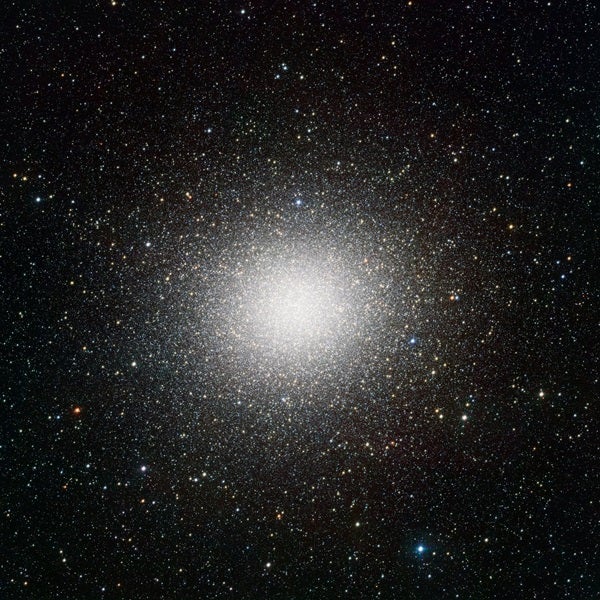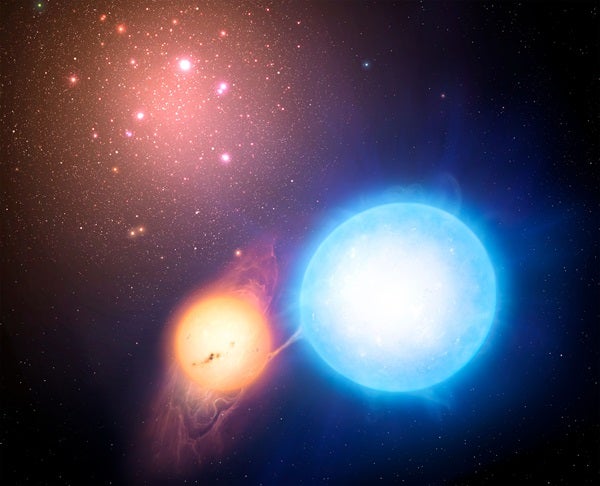How did this age discrepancy arise? The age of globular clusters has long been determined by studying the light from their stars. Astronomers compare the properties of the integrated (total) light received from globular clusters with templates of starlight produced by stars of different ages and types. (It’s worth noting that at one point, these models showed that globular clusters were older than the universe, so this wouldn’t be the first time astronomers have updated their age estimates for these objects.)
This new study takes a different approach, using new models called Binary Population and Spectral Synthesis (BPASS) models, which take into account the effects of binary stars and how the evolution of binary systems — which are known to be common — affects the light received from globular clusters. The idea is this: interactions between binary stars can change the properties of the starlight emitted by one star as elements from its atmosphere are stripped away by the gravity of a companion. When taken into account these binary interactions could make the starlight coming from globular clusters look more like the older templates used by astronomers to determine stellar age, prematurely aging the cluster.
BPASS models have previously been used to successfully determine the age of young stellar populations, both within the Milky Way and in extremely distant galaxies, but even with this age revision, globular clusters are still old. The next step, Stanway said, is to look at nearby globular clusters in which individual stars can be seen (faraway clusters just look like fuzzy balls, so all astronomers have to work with is the total light from all their stars together). Studying nearby clusters in better detail and comparing these results with the BPASS models should bring to light the accuracy of the models and this new age measurement.
But “If true,” she said, “it changes our picture of the early stages of galaxy evolution and where the stars that have ended up in today’s massive galaxies, such as the Milky Way, may have formed.”











